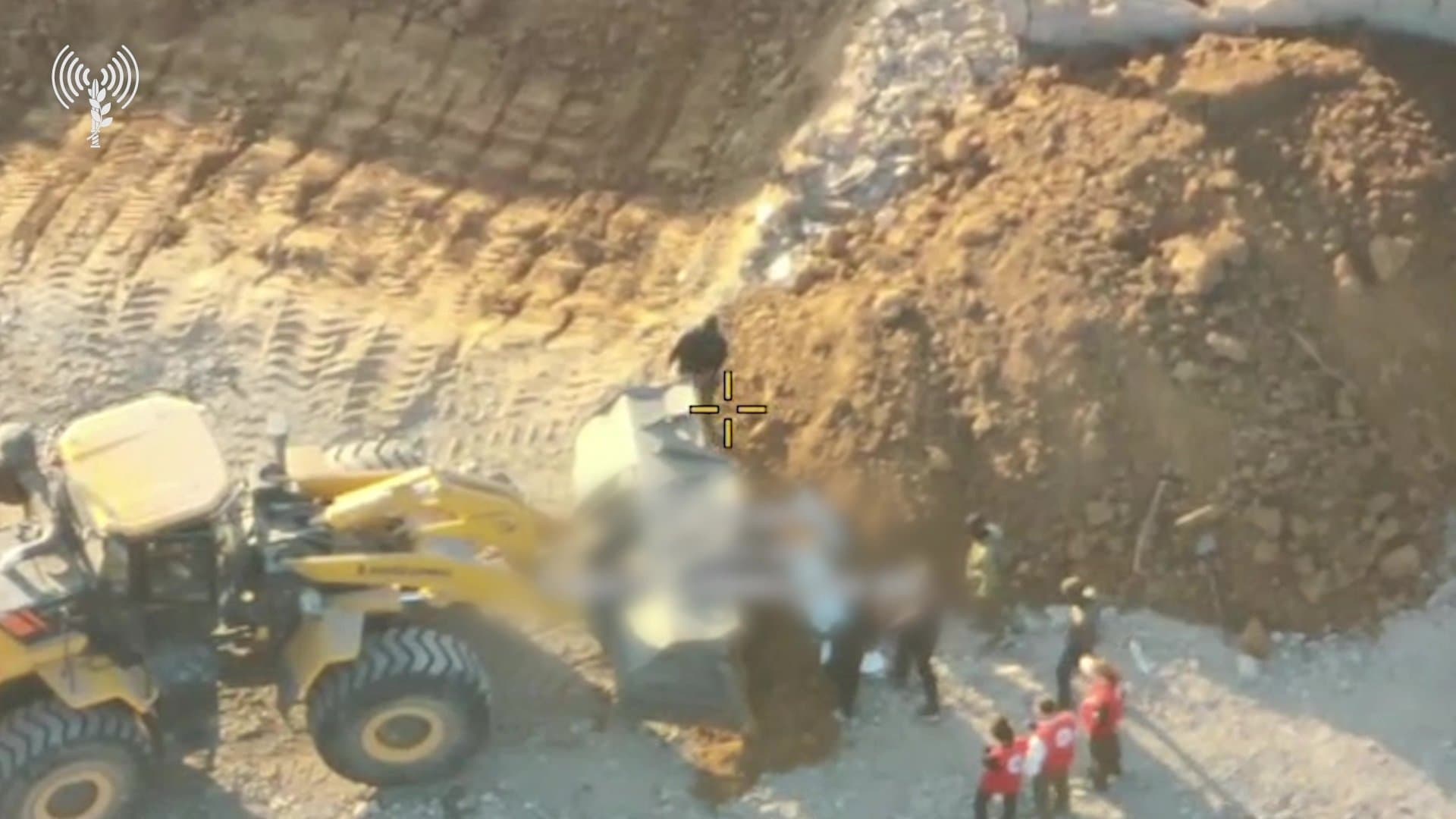This Editor’s Note was sent out earlier Wednesday in ToI’s weekly update email to members of the Times of Israel Community. To receive these Editor’s Notes as they’re released, join the ToI Community here.
In February, under the last Gaza ceasefire deal, Hamas “returned” the body of an unknown Gaza woman instead of the promised remains of deceased hostage Shiri Bibas, whom it had murdered in captivity along with her two sons, Ariel, 4, and Kfir, 9 months.
Two weeks ago, under the current deal, it “returned” the body of a West Bank Palestinian man rather than one of the deceased hostages it is still holding.
And on Monday night, it “returned” a casket containing additional remains of Ofir Tzarfati — who was shot and kidnapped by Hamas-led terrorists as he tried to escape from the Nova music festival, and whose body was recovered from Gaza by the IDF in December 2023 — again, rather than one of the 13 deceased hostages still in Gaza.
Showing a level of depravity that moved even the International Committee of the Red Cross to speak out, it had staged the ostensible recovery of these remains by digging a large hole in the Shejaiya neighborhood of Gaza City, dumping in a body bag with Tzarfati’s partial remains, covering it over, and then calling in the Red Cross to witness the “discovery” and extrication of the newly buried bag.
The entire process, however — from the intended clandestine burial of the body bag through its “discovery” — was filmed by an IDF drone. Thus, a production intended by Hamas to demonstrate that it was searching in good faith for the remains of the 13 final deceased hostages, and not breaching its requirements under the ceasefire deal, instead turned into a documented saga of Hamas fakery.
Israel and whatever proportion of the international community is prepared to honestly engage their brains when looking at Gaza were disgusted but not particularly shocked by Hamas’s duplicity. It was, after all, Hamas that invaded Israel, unprovoked, on October 7, 2023, from a territory it fully controlled, slaughtered 1,200 people in horrific circumstances, abducted 251, and presided over the deaths of 40 of them in captivity.
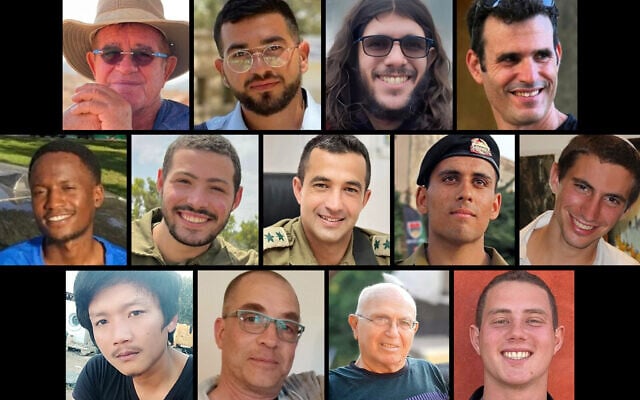
The terror group only returned the last 20 living hostages, on October 13, after US President Donald Trump galvanized his ties and influence over mediators Qatar and Egypt, his relationship with Turkey, and his own envoys’ mix of threats and assurances, to persuade Hamas that the living hostages had become a liability: So long as Hamas held them, Trump would not intervene to stop the war and the group would continue to be degraded. If Hamas gave them up, however, the fighting would end with Trump guaranteeing no resumption, and, in its calculation, it could survive, revive and ultimately resume its efforts at destroying Israel.
Why, then, is Hamas now manifestly stalling the return of the final deceased hostages — a less potent source of leverage than the living, with their absence relatively less anguishing and traumatic for Israel?
Well, for one thing, because it can: The signed October 9 agreement, in a striking and inexplicable departure from the original unsigned September 29 Trump 20-point Gaza peace plan, required Israel to release 2,000 Palestinian prisoners, including 250 life-term terrorists, in return for all the live hostages but without Hamas first also returning all the deceased hostages. Where the 20-point plan conditioned the release of the prisoners on the release of all hostages, living and dead, the operative October 9 agreement did not, instead giving Hamas a degree of wiggle room to claim that it was returning all the hostages it could reasonably locate.
And now that implementation of the Trump plan has begun, Hamas would like to believe that its cause — survival, revival and ultimate return — is best served by stalling on the release of the deceased hostages even as it resumes the deadly targeting of Israeli troops, reemerges and murders its rivals in the 50 percent of Gaza where the IDF is no longer deployed, and delays and ultimately prevents the implementation of the further elements in the Trump plan. These future steps notably include Hamas’s disarmament, the demilitarization of Gaza, and a new dawn for the Strip in which, to quote Point 13, “Hamas and other factions agree to not have any role in the governance of Gaza, directly, indirectly, or in any form.”
How does Israel, along with the Trump administration, regain the upper hand in the longshot bid to enable a stable and ultimately peaceful Gaza? For a start, the US president evidently needs to convey to those interlocutors he mobilized last time that Hamas had better immediately return those remaining deceased hostages, and that he does not buy its claims to be truly seeking to find and return all the bodies, with Monday’s staged “unearthing” of a newly buried body bag as proof of its duplicity. And that if it doesn’t honor its obligations, then Trump’s assurances about the war being over will no longer apply and Israel will be free to resume its military campaign, with a new capacity to target those Hamas strongholds where it previously could not operate for fear of killing hostages.
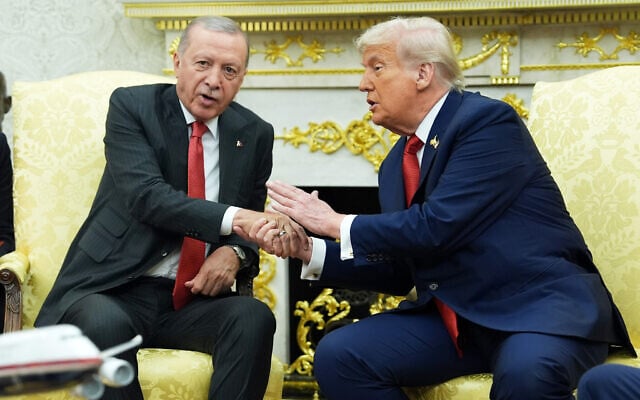
Beyond that, success for the Trump plan, success for Israel, ultimately requires agreement on and the implementation of a viable, realistic vision for Gaza in which Hamas is permanently marginalized. Prime Minister Benjamin Netanyahu is adamantly resisting any kind of role for the Palestinian Authority, but right now that’s deterring potential moderate partners such as the UAE and Saudi Arabia, complicating the establishment of the transitional International Stabilization Force envisaged in Point 15, and creating a vacuum being filled by pro-Hamas Qatar and Turkey.
As things stand, Hamas is in the process of turning its initial defeat, with the compelled release of the 20 living hostages, into a widening victory, as it reasserts control in much of Gaza, and still faces no military force other than IDF, and no alternate civil governance either.
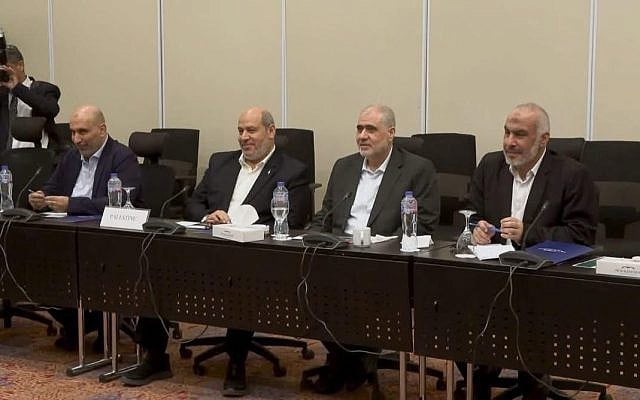
Cohesion-busting
The Netanyahu coalition, meanwhile, continues in multiple areas to act like its own and Israel’s worst enemy.
Enough of its members bucked the prime minister’s will to advance preliminary legislation last Wednesday that would annex all West Bank settlements even as US Vice President JD Vance was visiting, in what Vance described as a “very stupid political stunt” at direct odds with his president’s stated policy.
Hosting Netanyahu in February, Trump had indicated at least a willingness to consider West Bank annexation, saying he would set out his stance in the coming weeks. Even as annexation advocates, in the Knesset and outside it, celebrated the passage of the preliminary legislation last week, they had managed the singular feat of galvanizing the most definitive series of statements to date from the president and his senior officials firmly opposing annexation of any scope. Said Trump on Thursday, “Israel is not going to do anything with the West Bank.” In a Time magazine interview conducted earlier but published that same day, he added that if it tried to move ahead with annexation, “Israel would lose all of its support from the United States.”
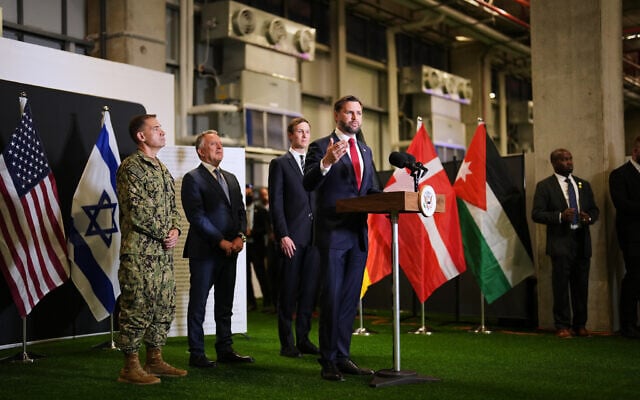
The coalition has also now resumed its national-cohesion-shattering efforts to crush Israel’s law enforcement apparatuses and authority. It is advancing a bill that would destroy the authority and independence of the attorney general. It is considering advancing legislation that would enable it to simply order a halt to Netanyahu’s corruption trial. And it continues to resist the establishment of a state commission of inquiry appointed by the president of the Supreme Court into the failures surrounding October 7, 2023.
Almost 2,000 Israelis have been killed in and since the Hamas invasion. It is unthinkable that the debacle and its multiple appalling causes not be investigated by the most powerful commission the law allows, to ensure the maximum capacity to prevent anything like it from happening again. But Netanyahu won’t have it, because he knows its recommendations would be terminal for him politically.
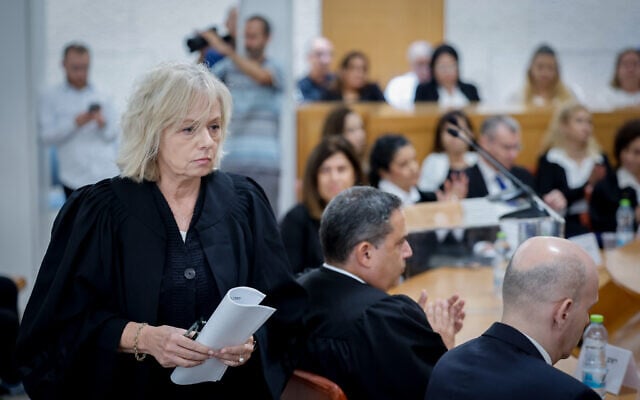
Finally, and perhaps most divisively, Netanyahu and his loyalists are stepping up their efforts to enshrine in law the untenable exemption from military service of almost all ultra-Orthodox young men, at a time when some 80,000 are eligible for service and the IDF is crying out for recruits.
The latest leaked text of the intended legislation, masquerading as an ultra-Orthodox army service bill, is so transparently designed to preserve the Haredi exemption from service that the small minority of Likud MKs with a modicum of integrity have publicly denounced the farce.
Likud MKs Moshe Saada and Dan Illouz have both highlighted that the legislation in its latest iteration features no quotas for recruiting ultra-Orthodox youths to combat and combat support roles. Without such quotas, protested Saada, “what good are we doing? We’ll enlist more kosher supervisors?” And the stated punishments for draft dodgers, including a ban on them getting driving licenses until age 23, are toothless, he added, demanding instead that those who do not serve not receive taxpayer-funded benefits, including in housing.
Opposition Leader Yair Lapid proposed this week that those who dodge IDF service be barred from voting — a disenfranchising, anti-democratic step. Far more appropriate, surely, is that those who evade serving in the defense of the state not receive benefits from the state.
Underlining a mindset firmly disconnected from both the nation’s needs and the authentic values of Judaism, ultra-Orthodox leaders are organizing an intended “million-man” gathering (yes, just men) at the entrance to Jerusalem on Thursday to protest any moves to draft them. Demonstrators on Tuesday donned yellow caps and carried yellow balloons at a gathering outside an IDF jail where an arrested Haredi draft dodger was being held.
That gathering, Thursday’s planned mass rally, and the adoption of yellow as the chosen color of protest cynically echo the tactics of the families of hostages seeking the release of their loved ones from Hamas’s hellholes. With nauseating obtuseness and insensitivity, organizers of previous protests have also circulated hostage-style posters of jailed evaders.
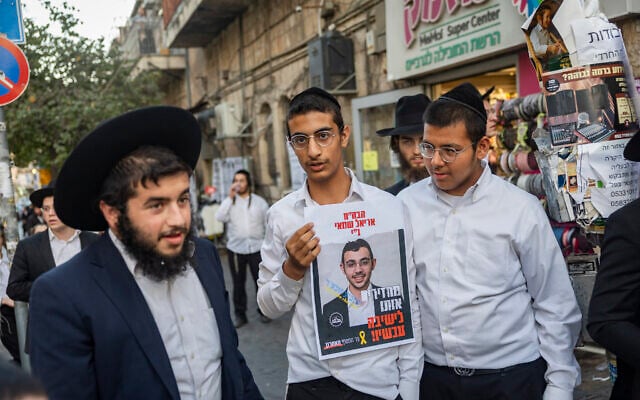
On Thursday, we can expect to see the entrance to Israel’s capital blocked by young men who, with their leaders’ and their government’s endorsement, refuse to play their part in the essential defense of this country. Deployed there en masse by their MKs and their rabbis, they will be blocking the route, among others, of many young Israeli men and women trying to get home for a Shabbat break from their service on one of Israel’s multiple battlefronts.

